
40
Technical Standards
for
Networks zyxwvutsrqponmlkjihgfedcbaZYXWVUTSRQPONMLKJIHGFEDCBA
In the past, telecommunications networks have been evolved in the minds of their designers to
meet well defined but changing user demands. These broadly innovative influences are bound to
persist and users can look forward to ever more sophisticated telecommunications services in the
future. It was only in the mid-1960s that customer-dialled international telephone calls first became
possible, and in those days such calls were for the rich alone. Nowadays the advance of technology
has made them
so
much cheaper that everyone takes them for granted. In the late 1960s everyone
marvelled at the first live satellite broadcasts; now there are
so
many satellites in space that many of
them no longer have names, only longitudinal geographic location references. Every day the
world’s communicators move larger and larger volumes of video, text, speech, and data informa-
tion around the globe, and all without
a
second thought. The revolution in communications that
we have seen, and the ever-widening scope for information transfer, have only come about
through an almost fanatical emphasis on the international compatibility of telecommunications
networks and equipment, underpinned by worldwide agreement on the technical standards
without which interconnection between networks in different countries and the interworking of
different network types would be impossible. This chapter discusses the various bodies involved in
setting these standards. It outlines in particular the recommendations of ITU (International
Telecommunications Union), the world’s most authoritative body
on
telecommunications
technical standards. zyxwvutsrqponmlkjihgfedcbaZYXWVUTSRQPONMLKJIHGFEDCBA
40.1
THE
NEED FOR STANDARDS
Whenever two or more pieces of equipment, built by different people or different
manufacturing companies, are called on to work harmoniously together within the same
network, there is
a
need for technical standards. The zyxwvutsrqponmlkjihgfedcbaZYXWVUTSRQPONMLKJIHGFEDCBA
standard
defines comprehensively
the interface, or set of interfaces to be used between various equipments.
It
describes
the functions that each
of
the equipments are required to perform, and it ensures that
the signals passed between the equipments are fit for their purpose, and unambiguous.
Only
a
network designed and built in isolation could exist without carefully defined
and documented technical standards for the interfaces. Such networks
are
extremely
723
Networks and Telecommunications: Design and Operation, Second Edition.
Martin P. Clark
Copyright © 1991, 1997 John Wiley & Sons Ltd
ISBNs: 0-471-97346-7 (Hardback); 0-470-84158-3 (Electronic)

724 zyxwvutsrqponmlkjihgfedcbaZYXWVUTSRQPONMLKJIHGFEDCBA
TECHNICAL STANDARDS FOR NETWORKS
rare, for even when manufacturers develop their own special interfaces for inter-
connecting two pieces of their own equipment, these interfaces usually conform to their
own documented proprietary standards. An example of a zyxwvutsrqponmlkjihgfedcbaZYXWVUTSRQPONMLKJIHGFEDCBA
proprietary standard
is the
systems network architecture zyxwvutsrqponmlkjihgfedcbaZYXWVUTSRQPONMLKJIHGFEDCBA
(SNA zyxwvutsrqponmlkjihgfedcbaZYXWVUTSRQPONMLKJIHGFEDCBA
)
(described in Chapter
18)
which can be used as the
basis for network design (called an architecture) interconnecting computer systems. zyxwvutsrqponmlkjihgfedcbaZYXWVUTSRQPONMLKJIHGFEDCBA
SNA
is similar to ITU’s (or
ISO’s)
OS1 model, but was developed by the IBM cor-
poration and was in use by their customers before the ITU standards had been agreed.
Most networks are from equipment supplied by many different manufacturers, who
usually cooperate with the network operators and other interested parties to define the
standards necessary to ensure correct interworking of equipment. The application or
potential of any particular
standard
is usually the determining factor in how many
parties need to be involved in developing and documenting it. Consequently many
slightly different groupings of manufacturers, network operators, users, and regulatory
bodies, both national and international, have sprung up over the years to address the
development of various different sets of standards. Each grouping (often called a
standards body)
tends to specialize in the interfaces required between particular types of
equipment (say computers, or facsimile machines, or
customer premises equipment
(CPE)
or safety). The remainder of the chapter describes a number of the most prom-
inent ones.
40.2
WORLDWIDE INTERNATIONAL STANDARDS ORGANIZATIONS
International network interconnections have always presented something of a challenge
for the engineers developing them. Historically, international telecommunications
between different countries have been provided by means of gateway switches, which
have provided a means for interfacing and interworking a common international stand-
ard with the plethora of slightly differing national networks. International standards
have thus provided the foundation of the recent boom in international communication.
The boom is likely to continue
so
long as each national network evolves slowly towards
the international standard, leading ultimately to a homogeneous worldwide network.
However, this is only one of the benefits to be derived from international standards; no
less important, with users of even the smallest networks insisting on conformance,
terminal equipment manufacturers will be obliged to produce devices of worldwide
compatibility.
The amount and quality of international standardization has improved rapidly in
recent years. One of the practices which has improved standards is the definition not
only of interfaces and protocols, but also of the procedures for
conformance
and
compatibility testing.
Such procedures are defined in standards called
PICS (protocol
implementation conformance statements)
and
PIXITs (protocol information extra
information for testing).
The most important worldwide standards organizations in telecommunications are
the
International Organization for Standardization
(ISO)
(colloquially the
International
Standards Organization)
and the
International Telecommunications Union (ZTU).
A
third
body, but only important in the agreement of standards for satellite working, is the
International Telecommunications Satellite Organization,
called
INTELSAT.

WORLDWIDE INTERNATIONAL STANDARDS ORGANIZATIONS
725 zyxwvutsrqponmlkjihgfedcbaZYXWVUTSRQPONMLKJIHGFEDCBA
International Organization
for
Standardization
(ISO) zyxwvutsrqponmlkjihgfedcbaZYXWVUTSRQPONMLKJIHGFEDCBA
The
IS0
is a ‘voluntary’ organization, composed of and financed by the national stand-
ards organizations (e.g.
British Standards Institute (BSI), American National Standards
Institute (ANSI),
etc.) of each of the member countries. Like each of its component
national organizations, the
IS0
lays down standards for practically every conceivable
item, not only telecommunications, but also the colour scheme for electrical wiring, and
even the standard sizes for paper (e.g. A3, A4, etc.). The organization has a number of
sub-committees, but in the main it does not produce standards from scratch. It tends
merely to ‘brush-up’ standards submitted by its member organizations. In this way the
local area network (LAN)
standard IS0 8802 started life as
IEEE802,
generated initially
by the American
Institution zyxwvutsrqponmlkjihgfedcbaZYXWVUTSRQPONMLKJIHGFEDCBA
of
Electrical and Electronic Engineers (IEEE).
Address
International Organization for Standardization
Rue de Varembe,
1
Case Postale
56
Geneve
20
Switzerland
Tel: (41)
22
749 0111
CH-l21 1
International Telecommunications Union
(ITU)
The ITU is an agency of the
United Nations,
responsible for overseeing all aspects of
telecommunications. Organizationally, the ITU is split into four permanent parts, all of
which are headquartered in Geneva. These are shown in Figure 40.1. The General
Secretariat is responsible for overall administration, finance, and publication of regula-
tions, journals and technical
recommendations
(their name for
standards).
The
Radio-
communication Bureau (BR
or
ITU-R)
serves in two functions, first as a ‘custodian of
international public trust’, regulating the assignment of radio frequencies throughout
the world, and so preventing interference between radio
stations
(this responsibility
used to be carried out by the ITU under the organization
called IFRB (International
(radio) Frequency Registration Board).
Second, the ITU-R acts as a
consultative com-
mittee
which generates technical standards and reports regarding radiocommunication
(this function was formerly carried out by the predecessor body known as
CCIR
(Consultative Committee for Radiocommunication)).
The
Telecommunications Standardi-
zation Bureau (TSB
or
ITU-T)
is the main
consultative committee
which generates
INTERNATIONAL TELECOMMUNICATIONS UNION (ITU)
Standardization
(TSB
or
ITU-T)
(BR
or
ITU-R)
Figure zyxwvutsrqponmlkjihgfedcbaZYXWVUTSRQPONMLKJIHGFEDCBA
40.1
Organization
of
the
ITU

726 zyxwvutsrqponmlkjihgfedcbaZYXWVUTSRQPONMLKJIHGFEDCBA
TECHNICAL STANDARDS FOR NETWORKS
technical standards for telephone/telegraph networks (including data networks). The zyxwvutsrqponmlkjihgfedcbaZYXWVUTSRQPONMLKJIHGFEDCBA
ITU-T (ITU standardization sector)
replaces the former body, known as the
CCITT
(International Telegraph and Telephone Consultative Committee).
The fourth part of the
ITU, set up by the plenipotentiary meeting in June 1989 is
the BDT (Bureau zyxwvutsrqponmlkjihgfedcbaZYXWVUTSRQPONMLKJIHGFEDCBA
for
the
Development of Telecommunications).
The BDT has the same status as the ITU-R and
ITU-T in its aim is to secure ‘technical cooperation’ but in addition it has a prime role in
raising help and finance to help the less-industrialized countries develop their tele-
communications networks. More than 150 countries are members of the ITU and
participate in the work of the consultative committees. Delegates to the individual
study
group
meetings comprise not only the main public network operators, but also scientific
and industrial organizations, private companies and equipment manufacturers. In the
main, the study groups generate
recommendations
from scratch, based on the
contribu-
tions
of delegates.
ITU-T approves new
recommendations
at the
WTSC (World Telecommunications
Standardization Conference)
which has replaced the four yearly
CCITT plenipotentiary
meeting
which formally approved the coloured ‘books’ of technical standards.
Address
International Telecommunications Union
Place de Nations
Geneve 20
Switzerland
(Same address for ITU-R, ITU-T and BDT)
Tel: (41) 22 730 51 11
CH-1211
(Sales and Marketing Service)
Tel: (English): (41) 22 730 6141
Tel: (French): (41) 22 730 6142
Tel: (Spanish): (41) 22 730 6143
International Electrotechnical
Commission (IEC)
Also known as
the Commission Electrotechnique Internationale (CEI),
the IEC exists to
promote international cooperation on electrical and electronic standards. It works in a
similar manner to the
ISO,
gaining an international consensus of opinion and issuing
standards in nine main fields, the most important to
us
being those affecting
Telecommunications and Electronic components and those on Telecommunications
equipment and information technology. The IEC has equal status and works in close
cooperation with the
ISO,
whose prime interest is in the non-electrical fields.
Address
International Electrotechnical Commission
Rue de Varembe, 3
Geneve 20
Switzerland
Tel: (41) 22 919 02 11
CH- 1202

REGIONAL AND NATIONAL STANDARDS ORGANIZATIONS
727 zyxwvutsrqponmlkjihgfedcbaZYXWVUTSRQPONMLKJIHGFEDCBA
INTELSAT zyxwvutsrqponmlkjihgfedcbaZYXWVUTSRQPONMLKJIHGFEDCBA
The International Telecommunications Satellite organization is run by subscription
between the world’s main international public network operators. Its prime purpose is
to develop, procure, and operate satellite services between countries. In support
of
these
aims it develops its own standards specifically for the satellite service (e.g. from satellite
earth station to satellite in space, or for zyxwvutsrqponmlkjihgfedcbaZYXWVUTSRQPONMLKJIHGFEDCBA
multiple
access
operation (see Chapter 33)).
Address
INTELSAT
3400 International Drive NW
Washington DC 20008
United States of America
Tel: (1)-202-944-6800
40.3
REGIONAL AND NATIONAL STANDARDS ORGANIZATIONS
A number of regional and national standards organizations are also in existence. In
some cases these duplicate the international standards, and may even be at variance
with them, a situation which is bound to persist, because
it
takes a long time
to
agree on
an international standard. However, some users cannot wait but feel obliged to develop
their own ‘interim’ standards, and these too tend to persist even after the emergence of
the world standard, because of the investment tied up in them. Notable regional and
national organizations involved in such standards are as follows.
Comite‘
Europe‘en
de
Normalisation (CEN)
The CEN is the European equivalent
of
the ISO; constituted of member national
standards bodies, it generates European Norms (ENS), but unlike IS0 standards ENS
are mandatory standards in the signatory countries to the CEN.
CENELEC,
a related
organization,
is
the European equivalent
of
the IEC, generating European electro-
technical standards.
Addresses
Comite Europeen de Normalisation
Rue de Stassart 36
Brussels
Belgium
Tel: (32) 2
550
08 11
B- 1050
CENELEC
Rue de Stassart 35
Brussels
Belgium
Tel:
(32)
2 519 68
71
B- 1050

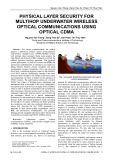


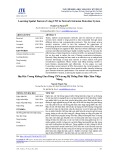
![Biến Tần FR-A700: Sổ Tay Hướng Dẫn Cơ Bản [Chi Tiết]](https://cdn.tailieu.vn/images/document/thumbnail/2019/20191130/cac1994/135x160/1741575103503.jpg)
![Xử lý số tín hiệu: Tài liệu thí nghiệm [Chuẩn SEO]](https://cdn.tailieu.vn/images/document/thumbnail/2018/20180821/danhvi27/135x160/7141534836177.jpg)

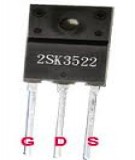
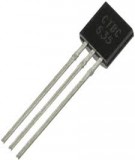





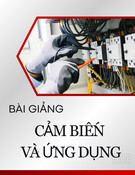

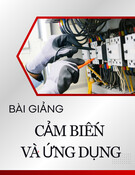
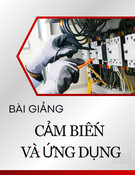


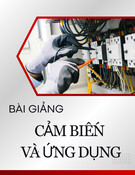
![Bài giảng Cảm biến và ứng dụng: Chương 1 - Các khái niệm và đặc trưng cơ bản [Chuẩn SEO]](https://cdn.tailieu.vn/images/document/thumbnail/2025/20251204/kimphuong1001/135x160/51101764832169.jpg)



